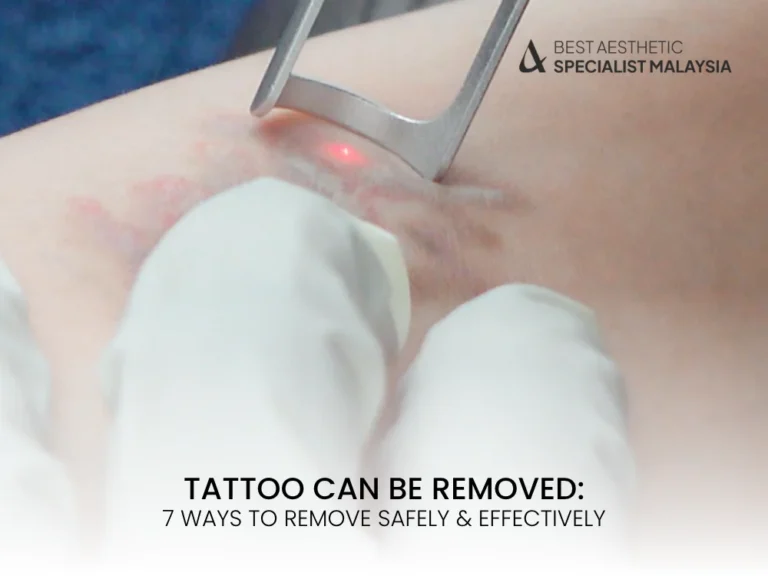Tattoos are often seen as permanent decisions inked into the canvas of our skin, but what if you change your mind? The good news is, a tattoo can be removed — and quite effectively too. Whether it’s a spontaneous design that aged poorly or a name you’d rather forget, modern removal methods offer hope, results, and confidence.
Let’s uncover the safe, science-backed, and surprising ways tattoos can be removed — along with tips, truths, and trusted advice to make your removal journey smooth and successful.
Understanding How a Tattoo Can Be Removed
Tattoos sit beneath the skin’s top layer, nestled within the dermis. That’s why simply scrubbing or exfoliating won’t do the trick. Professional removal processes aim to break down the ink particles so the body’s immune system can naturally flush them away.
Why People Choose to Remove Tattoos
- Career advancement or appearance concerns
- Personal growth or shifting beliefs
- Poor design quality or fading ink
- Allergic reactions or scarring
The tattoo can be removed safely with the right technique and medical guidance, especially when approached with realistic expectations.
Laser Tattoo Removal: The Most Popular Method
How It Works
Laser removal uses high-intensity light beams to fragment tattoo ink particles. These fragments are then absorbed and eliminated by the body’s lymphatic system over several sessions.
Types of Laser Technology
- Q-switched lasers – Targets black and dark inks
- PicoSure lasers – Delivers ultra-short pulses, effective for stubborn colors
- Nd:YAG lasers – Ideal for red, black, and blue ink
Each session gradually fades the tattoo, and while not instant, the tattoo can be removed significantly with proper treatment.

Surgical Tattoo Removal: When Lasers Aren’t Enough
Excision Method
This method involves cutting out the tattooed skin and stitching the surrounding skin back together. It’s ideal for small tattoos and offers complete removal in one procedure.
When to Consider Surgery
- Tattoo is too deep or dark for laser
- Scarred or damaged tattoo area
- Allergic reactions to ink
While invasive, this technique ensures that the tattoo can be removed entirely if needed.
Dermabrasion for Tattoo Removal
This mechanical method sands down the skin’s upper layers to allow the ink to leach out. It’s less common today due to discomfort and longer healing times but can still be a solution for specific cases.
Chemical Peels and Tattoo Removal Creams
These options claim to fade tattoos using acids or chemicals to peel the skin and remove ink. However, results are inconsistent and may cause irritation or scarring.
Warning: These should only be used under dermatologist supervision if at all, since improper use can damage the skin.
Saline Tattoo Removal: An Option for Cosmetic Tattoos
Saline solution is injected into the skin, drawing ink to the surface. This method is often used for cosmetic or semi-permanent tattoos like eyebrows and eyeliner.
Benefits:
- Non-laser option
- Works on all ink colors
- Less invasive for sensitive areas
Although slower, the tattoo can be removed using this method with precision and fewer side effects.
Tattoo Removal for Dark Skin Tones
Special care is needed for darker skin types to avoid pigmentation issues. Not all lasers are safe, so choosing an experienced provider is essential.
Pro Tip: Always consult a board-certified dermatologist to determine if your tattoo can be removed safely without affecting your natural skin tone.
Pain and Side Effects: What to Expect
- Redness and swelling
- Blistering or scabbing
- Temporary pigment changes
- Minor discomfort (comparable to a rubber band snap)
Most effects subside within a week. Numbing creams or cooling devices can minimize pain during treatment.
How Many Sessions Until a Tattoo Can Be Removed?
Multiple factors influence session count:
- Tattoo size and location
- Ink color and depth
- Age of the tattoo
- Skin type and health
On average, 5 to 10 sessions are needed for significant fading, though some cases require more.
Cost of Tattoo Removal
Tattoo removal isn’t cheap. Prices vary based on method, size, and location. Here’s a quick overview:
Method | Approx. Cost (Per Session) |
Laser Removal | $200 – $500 |
Surgical Excision | $500 – $1000+ |
Dermabrasion | $100 – $300 |
Saline Removal | $150 – $400 |
Remember, the value of clear skin and confidence is often worth the investment.
Aftercare Tips After Tattoo Removal
- Keep area clean and dry
- Avoid sun exposure
- Don’t pick scabs or blisters
- Apply antibiotic ointment
- Use cold compress for swelling
Following aftercare guidelines ensures your tattoo can be removed smoothly with minimal scarring.
Can All Tattoos Be Completely Removed?
While most tattoos can be significantly faded or fully removed, some ink colors like green or yellow are more stubborn. Also, professional tattoos penetrate deeper and may take longer than amateur ones.
With the right method and expert guidance, even difficult tattoos can be removed with impressive results.
Is Tattoo Removal Safe?
Yes—when done by a licensed dermatologist or certified technician using approved equipment. DIY methods can cause burns, infections, or scarring.
How to Choose the Right Tattoo Removal Clinic
- Board-certified dermatologist or medical technician
- Proven track record and before/after photos
- Transparent pricing and consultation
- Uses FDA-approved lasers
- Customized treatment plans
FAQs
1. Does laser tattoo removal leave scars?
Not usually, if performed correctly. Mild scarring may occur if aftercare is neglected or if skin is prone to keloids.
2. Can a tattoo be removed completely?
Yes, most tattoos can be fully or mostly removed with proper treatment, though results vary.
3. Is tattoo removal painful?
Discomfort is mild and manageable with numbing creams or cooling devices.
4. How long does it take to see results?
Visible fading begins after 2–3 sessions, with complete removal often requiring 5–10 sessions.
5. Is tattoo removal worth it?
Absolutely, especially for those who experience regret or want a clean slate. Confidence is priceless.
6. Are there any tattoos that can’t be removed?
Very old or deeply embedded inks might not be 100% removable, but most can be significantly faded.
Conclusion
In today’s world, you no longer need to live with a tattoo that doesn’t represent who you are. Whether you’re dealing with outdated ink, professional regrets, or simply want a fresh start, a tattoo can be removed safely, effectively, and confidently. Just make sure to research your options, consult professionals, and commit to the aftercare — because your skin deserves the best.

